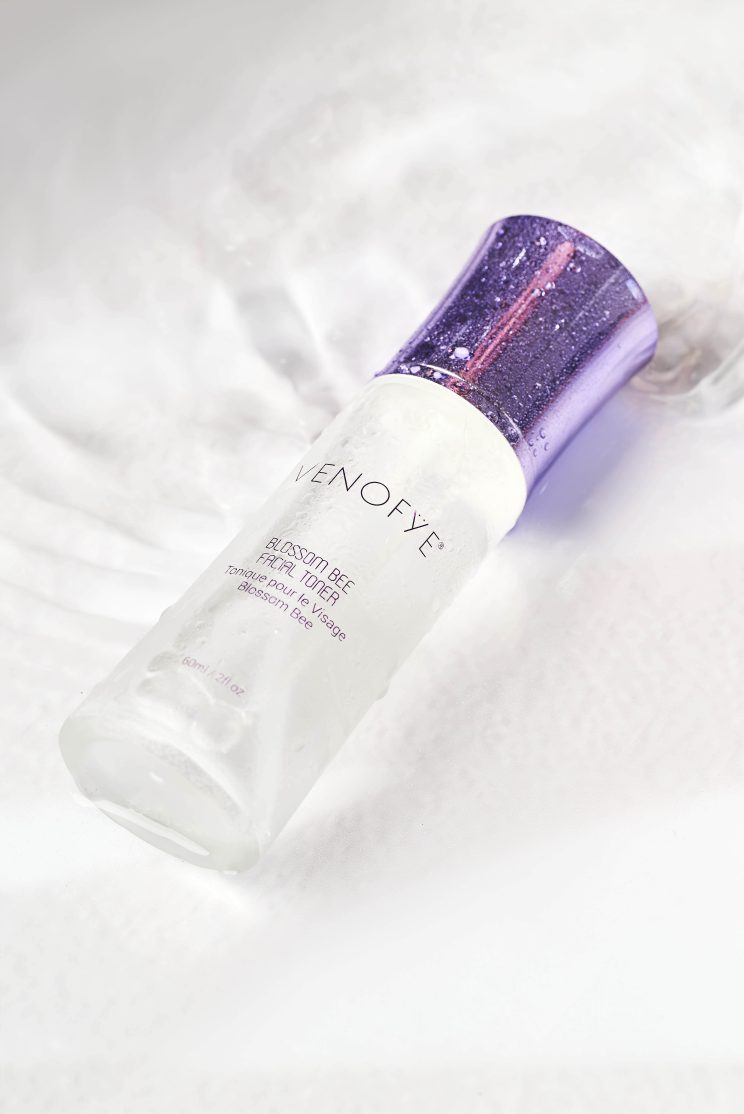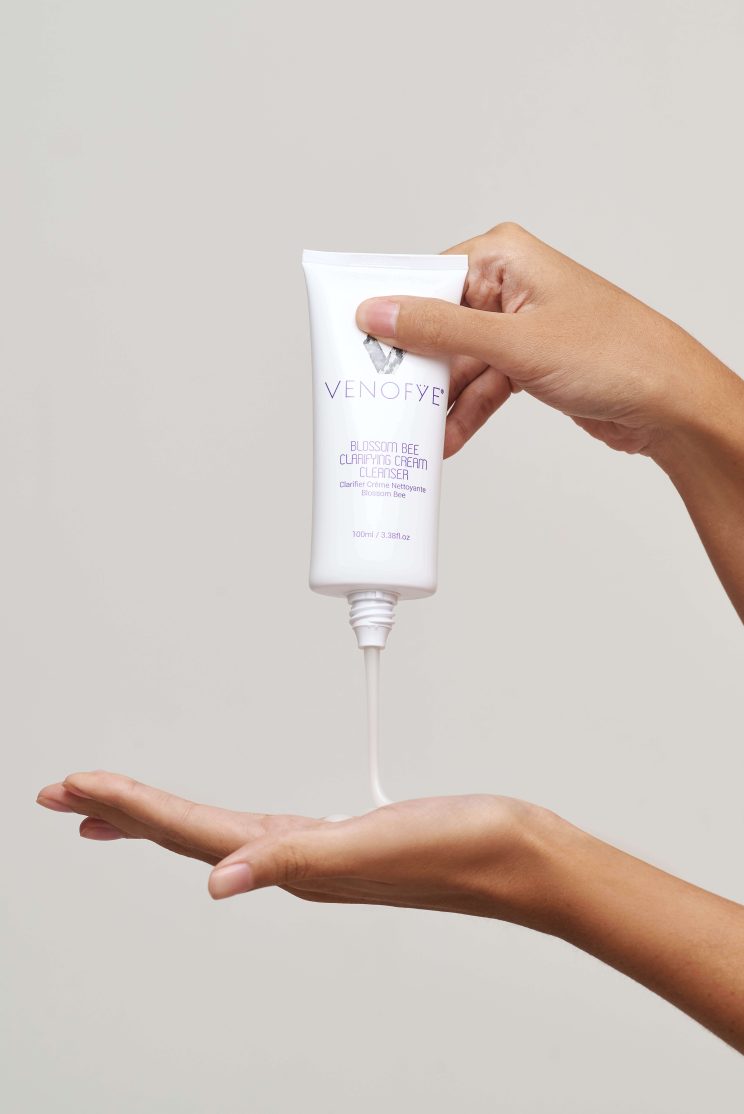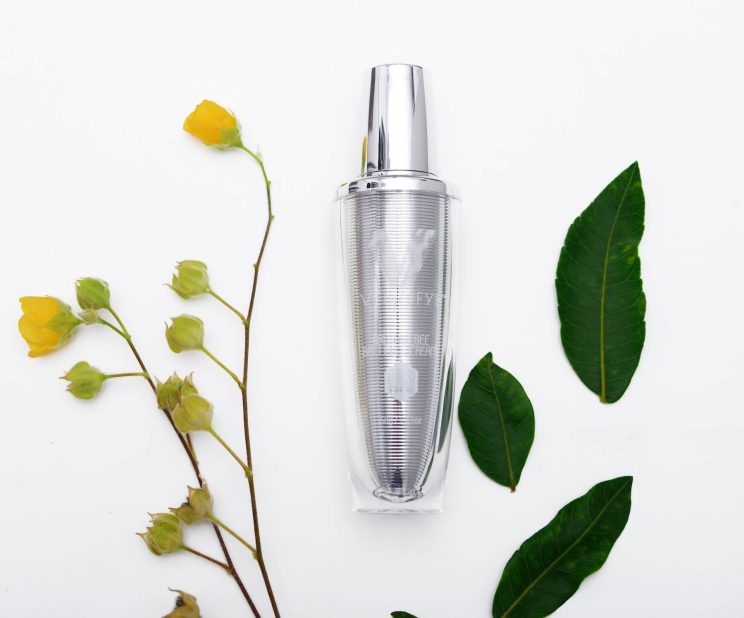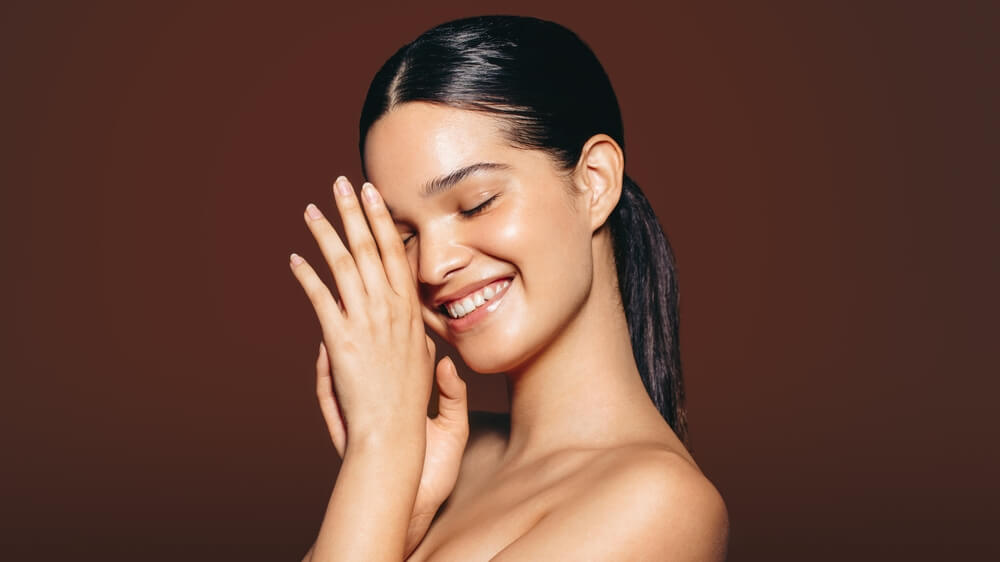While the thought of encouraging bacteria to grow on your face may seem shocking, it’s important to remember that not all bacteria are bad! In fact, bacteria make up a large part of your skin microbiome, which influences every part of your complexion.
So, how do you feed the good bacteria while discouraging harmful bacteria from flourishing? Keep reading as Venofye shares some top tips.
Give Your Skin Plenty of Hydration

Every living thing needs water to survive, and the good bacteria on your face are no exception. While hydrating your skin means that you’ll be giving the bad bacteria a moisture boost too, creating a hydrated environment encourages the multiplication of good bacteria in a way that then stifles the growth of harmful bacteria.
The best way to quickly hydrate your skin is by using skincare products containing humectants. These are ingredients that have moisture-binding properties, meaning they can draw moisture from the surrounding environment to your skin.
For the best results, layer a few different humectant-infused products over the top of each other. This allows each new layer to lock in the previous layer of moisture, which leaves the skin feeling hydrated to a deeper level.
If you’re new to layering skincare, start by applying a hydrating toner, like the Venofye Blossom Bee Facial Toner, to your skin after cleansing. Then, layer on a hydrating serum. The Venofye Iron Bee Boosting Serum is packed with humectants, including sodium hyaluronate, glycerin, collagen, and peptides. Finally, seal everything in with a hydrating face cream, such as the Venofye ViperLift Bio Cream.
Know Which Ingredients Have Prebiotic Properties

You’ve probably heard of probiotics – ingredients that contain good bacteria. While probiotic skincare products are starting to hit the shelves, these aren’t as great as they’re hyped up to be. The majority don’t actually contain any live bacteria, meaning that they won’t do much for your skin’s microbiome.
Prebiotics, however, are a different story. Rather than putting new bacterial strains onto your skin in the way that probiotic skincare claims to do, prebiotics are ingredients that feed the good bacteria that are already on your skin. By providing good bacteria with extra food sources, you’ll be encouraging those species to thrive. In turn, this will stifle the growth of harmful bacteria.
So, which ingredients have prebiotic properties? There are quite a few out there, such as:
- Certain plant extracts, such as oat, barley, and flaxseed
- Beta-glucan
- An ingredient group called fructooligosaccharides – compounds that are commonly found in berries
- Glycerol
- Aloe vera
You’ll find a few of those ingredients in the Venofye Iron Bee Transforming Cream. It’s a gentle and hydrating moisturizer that’s designed to leave the skin feeling stronger and better supported. Not only will your skin microbiome love it, but you’ll also quickly make it your go-to once you see how soft and smooth your skin feels after each application!
Stay Away From Harsh Cleansing Agents

If you want the good bacteria on your face to thrive, the last thing that you should be doing is washing that bacteria away each time you cleanse your face. Sure, some cleansers are gentle enough to preserve that bacteria, but the majority of formulas out there end up stripping away components of both your skin microbiome and your skin barrier.
How can you tell whether or not a cleanser is going to do this? By taking a look at the cleansing agents that have been used in that formula. Anything containing sulfates should be a no-go. They’re far too harsh for the skin and severely interfere with the natural balance of the skin microbiome.
Struggling to find a good sulfate-free cleanser? Check out the Venofye Blossom Bee Clarifying Cream Cleanser. Cream cleansers are known for being ultra-gentle, and this formula highlights that. With coconut-derived cleansing agents, plenty of hydrating ingredients, and a sprinkling of antioxidants, this is a cleanser that the good bacteria on your face will very much appreciate!
Feed the Good Bacteria in Your Gut
Although the microbiomes of your gut and your skin may be very different, they’re still intrinsically linked. They have a bidirectional relationship, known as the gut-skin axis. This essentially means that each can easily affect the other.
Numerous studies point to how a healthier gut leads to a healthier complexion. So, if the good bacteria on your skin could do with some help, giving your gut microbiome some TLC can do just that.
How do you improve the health of your gut microbiome? Diet plays a big part in this. Probiotics, which contain good bacteria, will add to the diversity of your gut microbiota. Fermented foods, like yogurt, kefir, sauerkraut, kombucha, and kimchi are loaded with probiotics.
Prebiotics, as we’ve already discussed in relation to skin bacteria, can also be consumed to feed the good bacteria in your gut. Garlic, onions, asparagus, and leeks are just a few examples of foods that are rich in prebiotics.
While you’re at it, try to limit your intake of processed foods. These have a negative effect on the gut microbiome and will only smother out good bacteria.
Wear SPF Religiously

Hopefully, you’re already aware of how important it is to keep your skin protected from the sun. However, while most people regard sun protection as a way to stave off wrinkles and skin cancer, it can go a long way in keeping the good bacteria on your skin happy too. UV rays are notorious for altering the delicate balance of bacteria on the skin while also damaging the food sources that those bacterial species rely on.
Of course, when choosing an SPF product to use, keep everything that we’ve already discussed in mind. Ideally, you want to find a gentle formula that also happens to be hydrating. If it contains prebiotic ingredients too, like the Venofye Orchard Bee Brilliance Cream SPF 30 does, then you’re really onto a winner!
Limit Your Use of Antibacterial Products
Antibacterial cosmetics have become pretty popular in recent years. Everyone was clamoring for them during the COVID-19 pandemic, and many still believe that these formulas, which are designed to kill bacteria on the skin, are the best way to keep the skin healthy.
While it’s true that antibacterial products help to do away with bad bacteria, they do the same to the good bacteria on your skin as well. This can cause a major imbalance – one that’s hard for your skin to rectify.
While this doesn’t mean that you have to completely stop using antibacterial products, try to limit your use of them as much as possible. An antibacterial soap or hand wash can be a good idea if you’re out and about in a dirty environment, but don’t make it a regular part of your lifestyle.
Spend Time in Nature
Speaking of ‘dirty’ environments…
Many view soil as being ‘dirty’, yet soil happens to hold one of the most diverse ecosystems on the planet. Just like your skin and your gut, soil has its own microbiome. It contains many of the same bacteria, viruses, and fungi that are found in the skin and gut microbiomes, as well as so much more!
Interestingly, simply spending some time in nature, in a way that has you physically interacting with soil, has been shown to vastly improve the diversity of the skin microbiome. It’s very easy for the microbes from the soil to transfer over onto the skin. Once there, it fortifies the good bacteria on the skin, leaving less room for harmful bacteria to grow.
With the average American spending 90% of their life indoors, making an effort to be more at one with nature could end up being transformational for your complexion.
Sweat it Out
Another reason to spend more time outdoors is that it encourages sweating. Why is this a good thing? Believe it or not, sweat can have a very positive effect on your skin’s microbiome.
Sweat contains an antimicrobial peptide called dermcidin. It protects the skin from harmful bacteria, which gives good bacteria a chance to multiply. Of course, you don’t want to let sweat linger on your skin all day – this will only cause congestion and clogged pores. However, working up a sweat regularly and allowing that perspiration to sit on your skin for a short period of time before it’s washed away could significantly boost the good bacteria on your skin.
Learn How to De-Stress
Stress affects the skin in a number of different ways. It accelerates the skin aging process, contributes to oiliness and acne, triggers dehydration, and even impacts the skin’s microbiome. How? The exact link between stress and skin flora is still unknown. However, it’s likely due to how a stressful situation stimulates the body into releasing cortisol, a hormone that causes inflammation in the skin. Inflammation is bad news for your skin’s microbiome – a fact confirmed by science.
Therefore, if you want the good bacteria on your skin to dominate the bad, keeping stress to a minimum is essential. Fortunately, even if you currently have a lot of stressors in your life, there are plenty of stress-busting techniques out there that you can turn to. Everyone deals with stress differently, so take some time to explore and test out the most effective stress relievers so that you can pinpoint a few that are worth turning to when your stress levels start to rise:
- Deep breathing exercises
- Exercise
- Spending time with loved ones
- Spending time with a pet
- Laughter
- Enjoying a hobby
- Immersing yourself in nature
- Listening to music
Summary
When it comes to keeping your skin healthy, having an understanding of its microbiome, as well as the balance between good and bad bacteria, is essential. Feeding the good bacteria on your skin will encourage it to flourish, which means fewer opportunities for any harmful bacteria to cause problems. Start by following the tips that we’ve shared above, and you should soon see a big improvement in how your skin looks and feels.
Click here to explore more skincare bestsellers from Venofye.




0 comments on “How to Feed the Good Bacteria on Your Face”